INTRA-VEHICLE GAMES
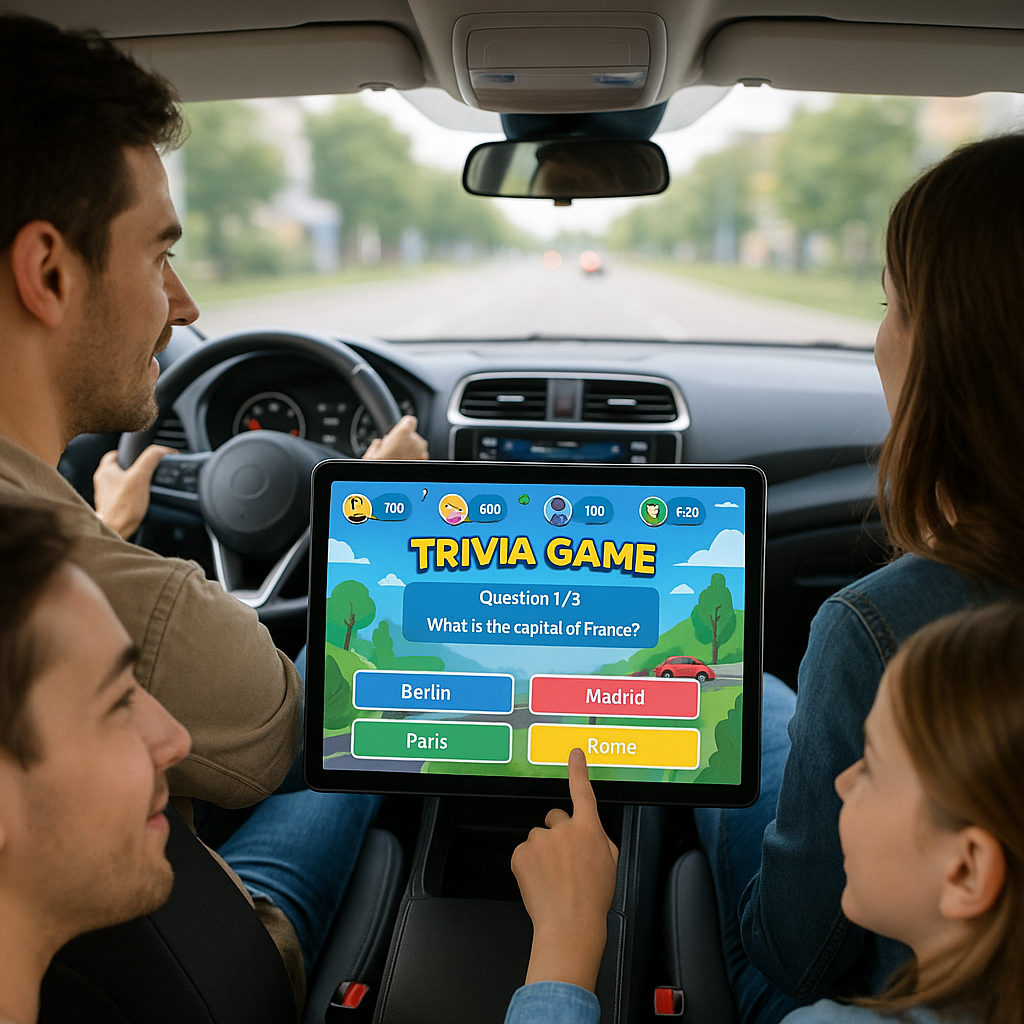
Invented by Lake-Schaal; Gary, Chappell, III; Arvel, Allison; Pamela J., Ostrover; Lewis, Zajac; William, Buenaventura; Lea Carla L., Morris; Genevieve, Abhyankar; Prashant
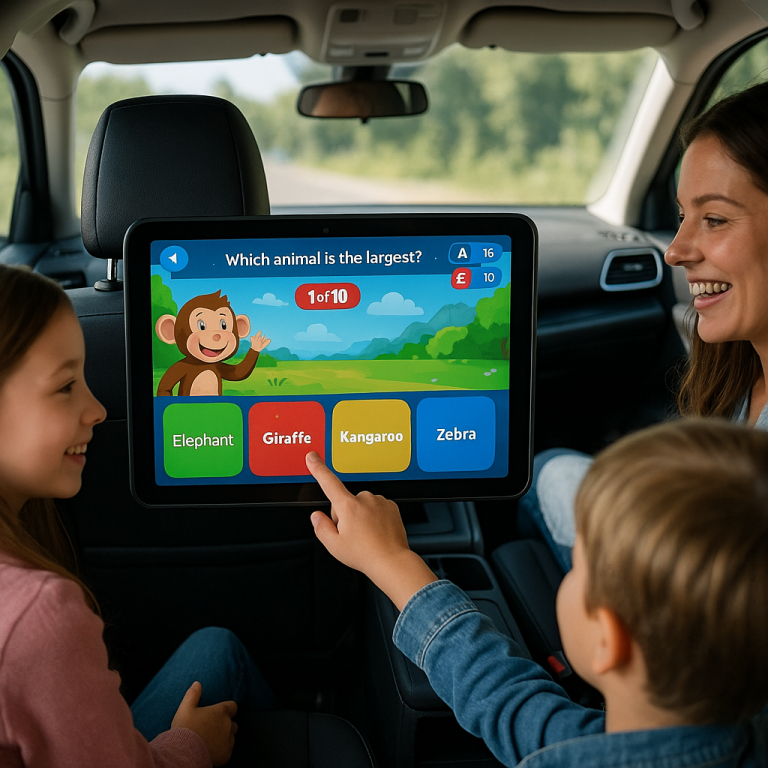
The way we travel and enjoy entertainment is changing fast. More people use rideshares, and cars are getting smarter every year. A new patent application aims to make trips more fun by giving every passenger custom-tailored games, music, and interactive experiences—right in the vehicle. Let’s break down what this technology means, how it fits into the world today, how it works, and what makes it special.
Background and Market Context
Imagine stepping into a car, bus, or train and having the entertainment system know exactly what you’d like to watch, play, or listen to—even if you’re sharing the ride with strangers. Today, most cars let you listen to the radio, play songs from your phone, or maybe watch a video if you’re on a plane. But all of this is usually set up by you, or it’s the same for everyone.
Now think about how the world is moving. Ride-sharing apps like Uber and Lyft are everywhere. Autonomous cars are being tested on roads. People are spending more time in vehicles, both alone and with others. Kids, teens, adults, and even seniors all use these services. But despite all this change, the way we get entertained on the move is lagging behind.
Right now, if you want to play a game or watch a show in your ride, you need to pull out your own device, log in, find what you want, and hope you have a good connection. If you’re with friends, you might try to play something together, but it usually takes work and isn’t always smooth. If you end up sharing a car with strangers, you probably just sit quietly and wait for the ride to end.
The market is ready for something smarter. People want more than just a playlist—they want experiences that match their mood, the route they’re taking, and who they’re with. Kids want games. Adults want music or podcasts that fit their vibe. Groups might want something to do together. And as cars get smarter, there are more screens, sensors, and ways to connect.
That’s where this patent steps in. It’s designed for a world where vehicles not only move us but also entertain and connect us in new ways. The idea is to use technology to deliver interactive media—like games, stories, music, and more—that changes based on who’s in the car, where you’re going, and even how you’re feeling. This is more than a playlist; it’s a personal, group, and trip-aware entertainment solution.
Scientific Rationale and Prior Art
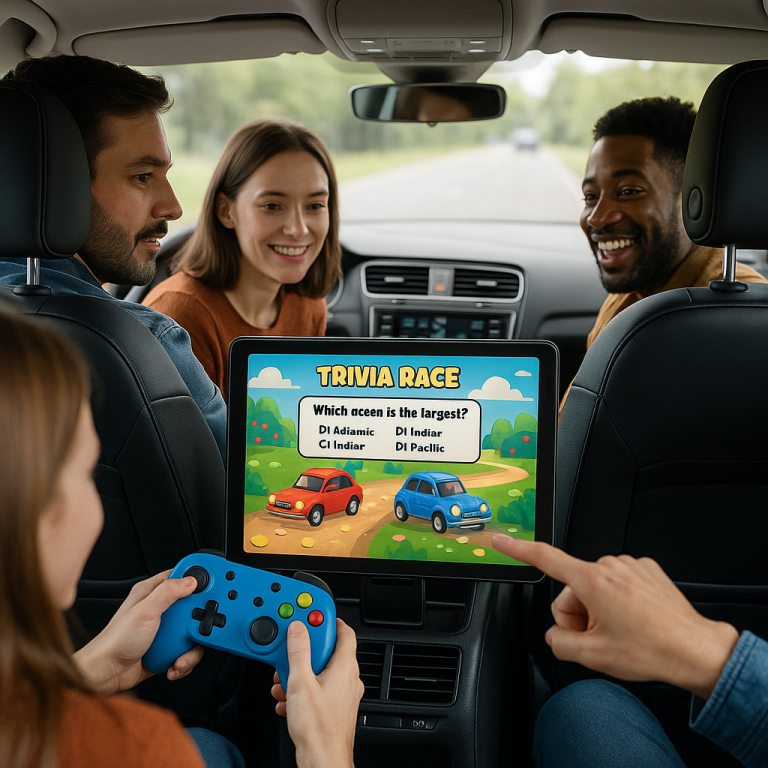
To understand why this invention matters, let’s look at what’s been possible before. For years, we’ve had travel games—think “I Spy” or “20 Questions”—that people play to pass time. On planes, buses, or in the back seat, screens offer movies or simple games, but these are the same for everyone or require you to set them up yourself.
In the 1980s, some computers and game consoles started offering interactive stories. Soon, video games began to blend stories, choices, and player input. Now, we have games that react to what you do. Still, these are mostly for solo play, or you need to connect online with friends. And none of these are built to use your travel route, who you’re with, or real-world data like where the car is going.
Today’s smart devices—phones, tablets, car screens—can play music, show movies, or run apps. Some can access your playlists, favorites, or even learn your listening habits. But they don’t know who else is with you, what kind of trip you’re on, or how to pick group games that everyone will like.
Artificial intelligence (AI) and machine learning are changing other parts of our lives. Apps suggest movies or songs based on what you’ve watched or listened to before. Some smart home speakers can sense your mood from your voice. Yet, in cars and other shared vehicles, using AI to shape group entertainment is still new.
There are car systems that let you adjust the temperature, lighting, or music. Some advanced setups in luxury cars or planes offer personal screens. But picking interactive content for a group, based on everyone’s profiles, the purpose of the trip, the mood, or even the route—this is mostly uncharted territory.
So, the gap is clear. Entertainment in vehicles is not personal, not interactive for groups, and doesn’t adapt to changing situations or moods. That’s what this patent aims to fix. It uses AI, sensors, and data to know who’s riding, where you’re going, and what people want—then delivers the right media for the moment.
Invention Description and Key Innovations
This patent describes a smart system for vehicles that figures out the best interactive media for everyone on board. Here’s how it works, step by step, in simple terms.
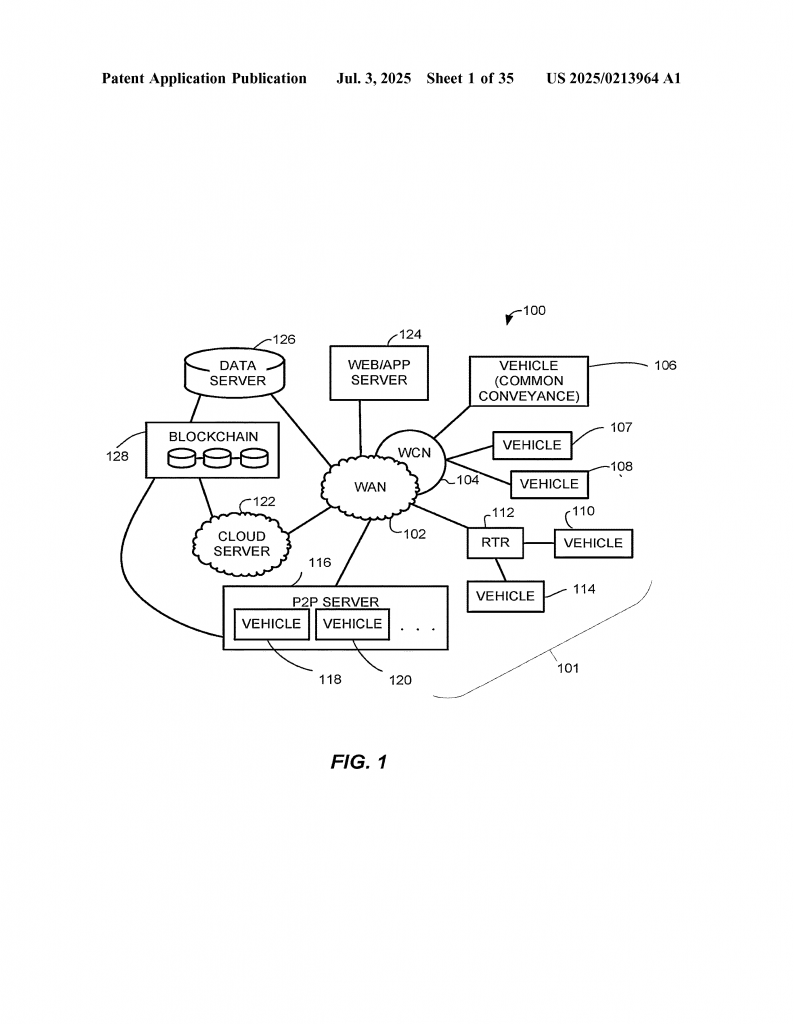
1. Sensing Who’s Onboard
As soon as you or anyone else gets in the vehicle, the system figures out who’s there. This can happen in many ways: from your phone connecting to the car, swiping a card, using a rideshare app, or even face or voice recognition. The system can handle just one person or a whole group sharing a ride.
2. Gathering Profiles and Trip Details
Next, the system collects data about each passenger. This isn’t just your name—it’s your age, what you like, what you’ve played or watched before, your social preferences, favorite sports teams, favorite music, and so on. It also gets details about the trip: Where did the ride start? Where is it going? How long will it take? Are there special places along the way?
3. Choosing the Right Media, Powered by AI
Now the magic happens. The system uses smart algorithms—like AI and machine learning—to pick interactive media that best fits the group. This could be a game everyone can play, a story with choices, a trivia challenge, a karaoke session, or even a collaborative drawing. If one person likes puzzles and another loves music, maybe the system picks a music trivia game. If you’re heading to a sports game, it might offer a quiz about your favorite team.
What’s special is that the system isn’t just picking from a fixed list. It learns from everyone’s past choices, current mood, and even the purpose of the trip. Headed to a birthday party? It might choose a celebration-themed game. Going to a concert? Maybe a music guessing game. If kids and adults are together, it finds something everyone can enjoy.
4. Making It Interactive and Responsive
Once the media is chosen, the system sends it to the right screens, speakers, or devices in the car. But it doesn’t stop there. Passengers can interact using touchscreens, voice, or even gestures. The system can pay attention to how people respond—if someone looks bored or unhappy, it can switch things up.
It can even use sensors to pick up mood—maybe from facial expressions, voice tone, or wearable devices. If the group is quiet and tired, it may pick soothing music or a gentle game. If everyone’s excited, it might choose a fast-paced game or upbeat playlist.
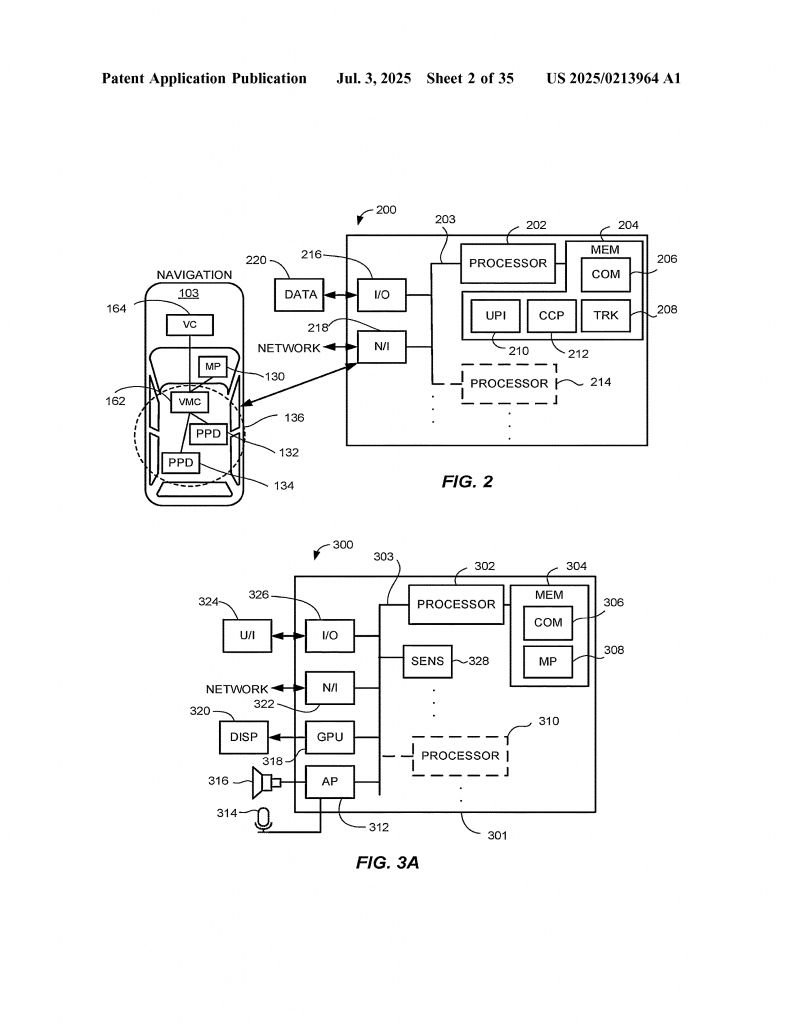
5. Adapting to the Route and Real-Time Events
A big innovation is tying the media to the trip itself. The system knows the route—where you’re starting, stopping, and what’s along the way. If you pass by a famous landmark, it might play a trivia question or tell a story about it. For a road trip, it could sync a game or story to match the scenery or stops.
If the trip is long, the system can pace things out—maybe starting with a social game, then switching to a movie, then a short quiz before arrival. If there’s a delay or traffic jam, it might offer something to keep everyone entertained or relaxed.
6. Supporting Group Dynamics
The patent also covers ways to invite new passengers to join a ride, based on shared interests. If you’re open to meeting new people, the system can suggest adding someone with similar tastes or a matching schedule. For group rides (like going to a concert), it can help form groups based on what people want to do together.
If things aren’t working out—say, two people aren’t getting along—the system can offer to separate them or let someone leave the group. It can even create private zones with barriers or by changing the seating or media output.
7. Privacy and Personalization
All this is done while keeping people’s data safe. The system can use anonymous data when needed or let each person control what gets shared. It can remember what you liked for next time or let you erase your history.
8. Flexible Technology Setup
This isn’t just for cars. The system works in buses, trains, planes, and even elevators or amusement rides. It can use built-in screens, AR/VR headsets, mobile devices, or even project onto windows or walls. The media can be simple (audio or video) or rich (games, virtual worlds, creative apps).
9. Real-Time Feedback and Smart Adjustments
As the ride goes on, the system keeps learning. If it senses people getting bored or unhappy, it can adjust the volume, switch content, or suggest a new activity. If someone is actively engaged—singing along, answering questions, drawing—the system rewards and encourages them.
10. Use Cases and Examples
– A family on vacation gets a travel game that highlights interesting places along their route.
– Two friends heading to a concert get a music quiz about the band they’re about to see.
– A group of strangers share a rideshare and are offered a social icebreaker game.
– Kids on a school bus play an educational game tied to the landmarks they pass.
– A solo rider gets a calming playlist and a chance to edit a video of their trip.
Key Innovations
– Bringing together passenger data, trip info, and AI to pick the best interactive media
– Adapting media in real time based on mood, group makeup, and route events
– Supporting both solo and group play, with features for inviting, matching, or separating passengers
– Using any kind of screen or device, from built-in car displays to VR headsets
– Making the whole experience seamless—no setup, no searching, just jump in and enjoy
Actionable Takeaways
If you build or use transportation tech, think about how to make trips more personal. Gather only the data you need, use smart algorithms to match content, and always give passengers control. If you design media—games, music, stories—consider how it could change or react to real-world travel and group dynamics. And if you’re a traveler, get ready for a future where every ride feels made just for you.
Conclusion
This patent is a big step toward making shared rides and solo trips more fun and engaging. It blends AI, personal data, group preferences, and real-time feedback to create interactive media that fits every trip and every passenger. As vehicles get smarter and entertainment moves off the couch and into the car, expect these ideas to shape how we enjoy time on the move—making every journey a little more special, connected, and memorable.
Click here https://ppubs.uspto.gov/pubwebapp/ and search 20250213964.


